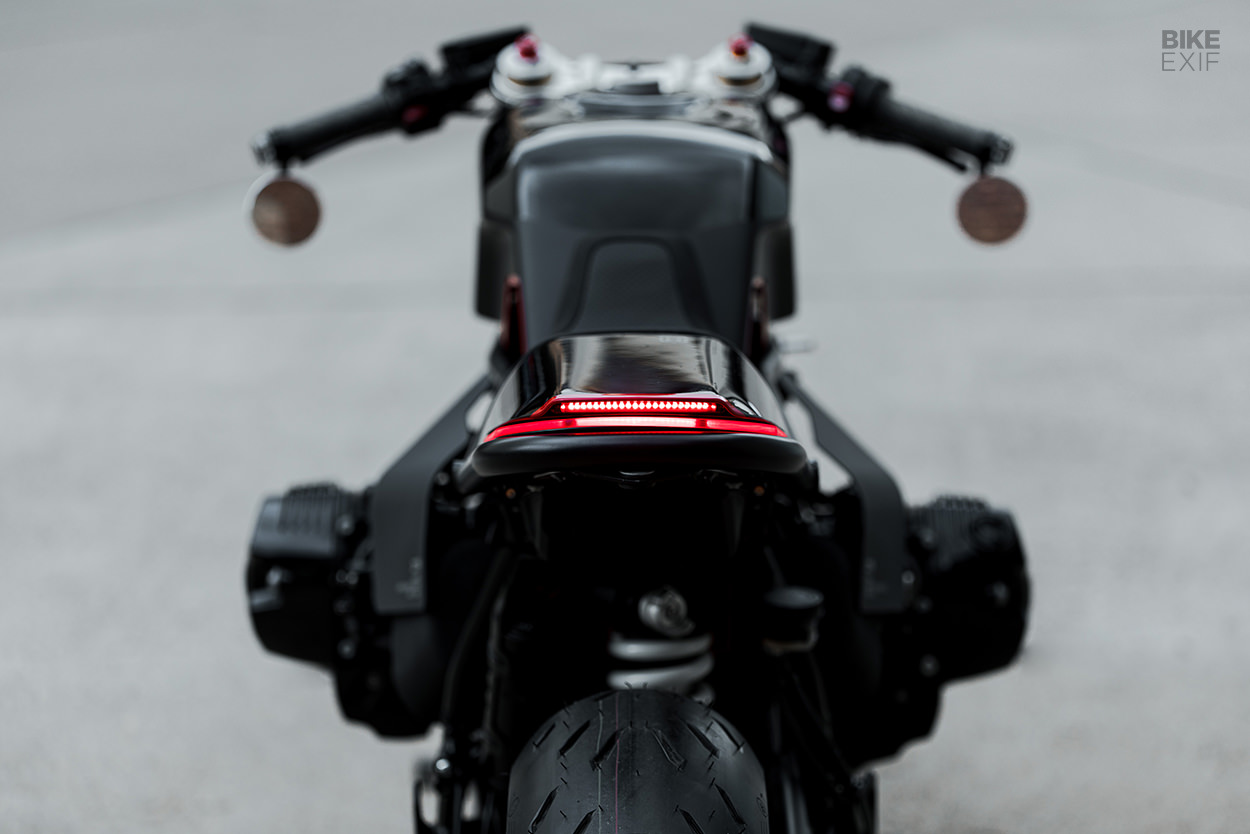
We interviewed the team behind the development of the BMW R nineT a few years ago. They were adamant about one thing: the base bike should be easy to adapt to a wide range of styles. Now the German shop Hookie Co. are driving that point home, with their second plug and play kit for the nineT.
Hookie’s first ‘Moto-Kit’ had a laid-back scrambler vibe, but this new design takes a different approach. Dubbed ‘Cobra’ and available as a limited made-to-order series, it transforms the nineT into a hawkish neo-retro cafe racer—without a stitch of cutting or welding.
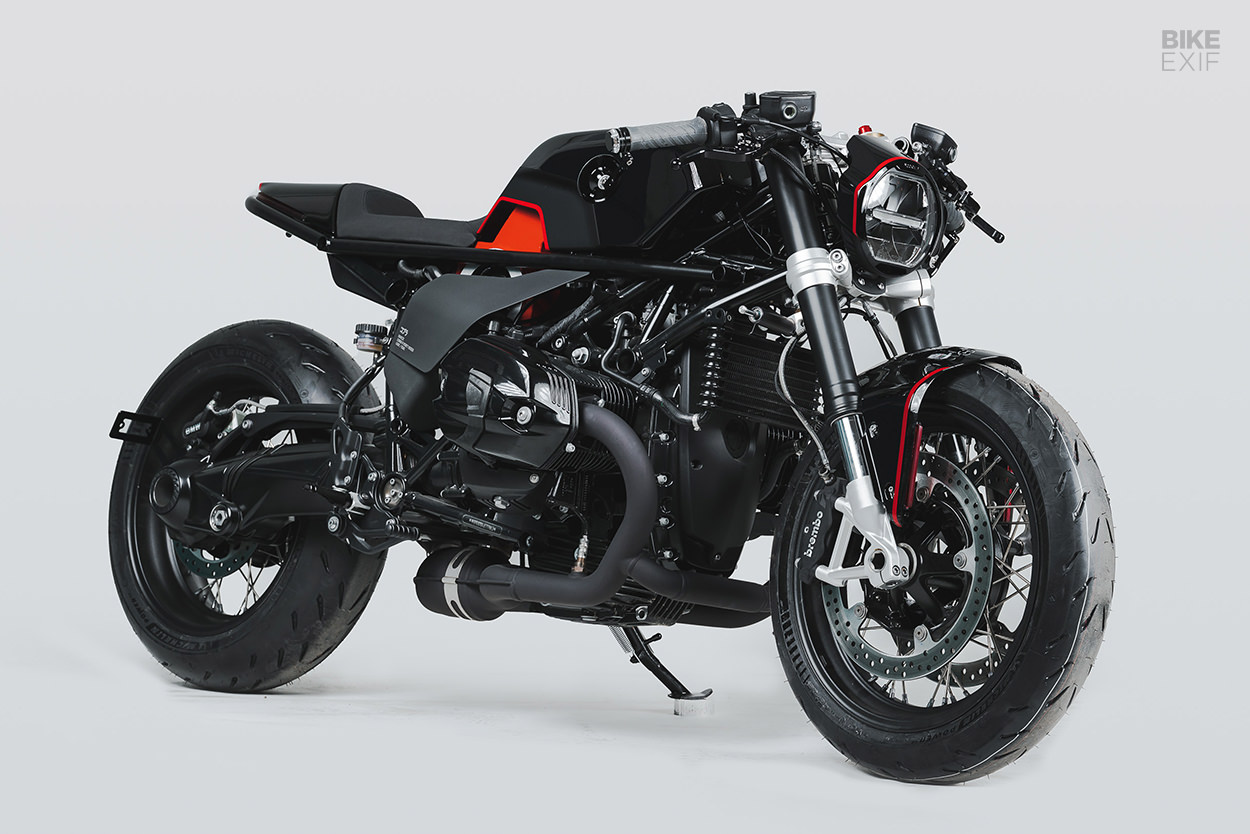
It’s a concept that’s been bouncing around Hookie Co.’s Dresden HQ ever since they started work on the first kit, but it took a long time to come to light.
First, the crew built a clay model that was shown off at the Allride Show in Prague, late in 2019. Then they moved to 3D CAD software—spending months refining every detail, before finally starting work on this prototype.
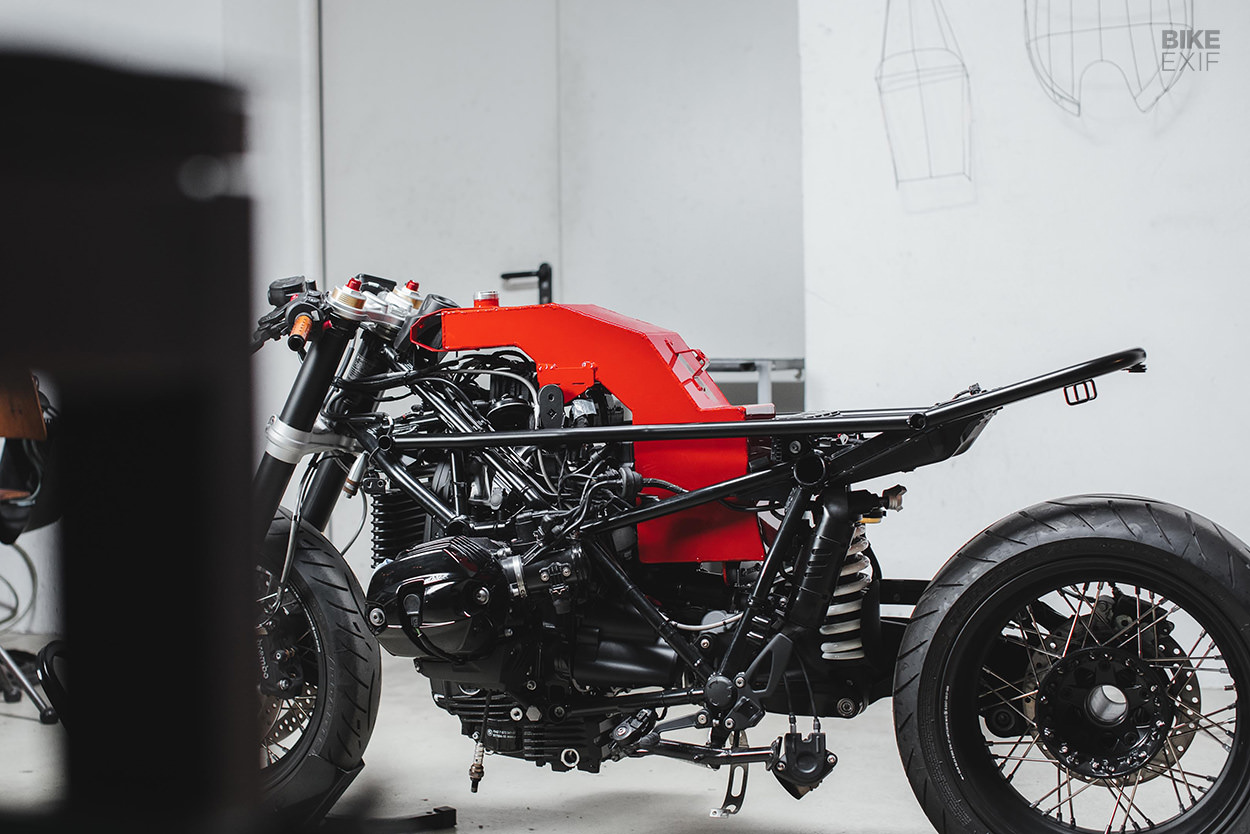
The two Hookie kits only share one part: a 12-liter [3.17 gallon] aluminum fuel cell that slots into the R nineT chassis like a Tetris piece. It mounts to the frame’s stock mounting points with vibration damping fasteners, and uses the original BMW fuel pump.
Giving the tank area its actual form is a bolt-on tank cover. The design is aggressive, with knee indents keeping the rider’s space narrow, and cutouts to reveal the powder-coated fuel cell below.

Hookie made the scrambler version out of carbon fiber—but the shape of this one is more complex, and the team is on a mission to investigate more sustainable ways of manufacturing parts. So they 3D printed the part using an acrylic-like AE12 material, citing ease of replication and a small manufacturing footprint as their reasons.
Aluminum side panels carry the lines further down, while also helping to tuck away the modern Beemer’s electronics. They also hide Hookie’s proprietary airbox, which is designed to work around the new fuel cell and uses a filter from DNA Filters.

A new subframe helps level out the R nineT’s bone line. It runs the entire length of the bike and, like the fuel cell, bolts to stock mounting points. It’s also narrower at the front than its scrambler counterpart, to match the carved effect of the tank cover.
A kicked-up loop at the rear accommodates a sharp tail hump, modeled off one of Hookie’s existing universal tail pieces. The seat’s been covered in a luxurious waterproof fabric, with a slick perforated effect up top.
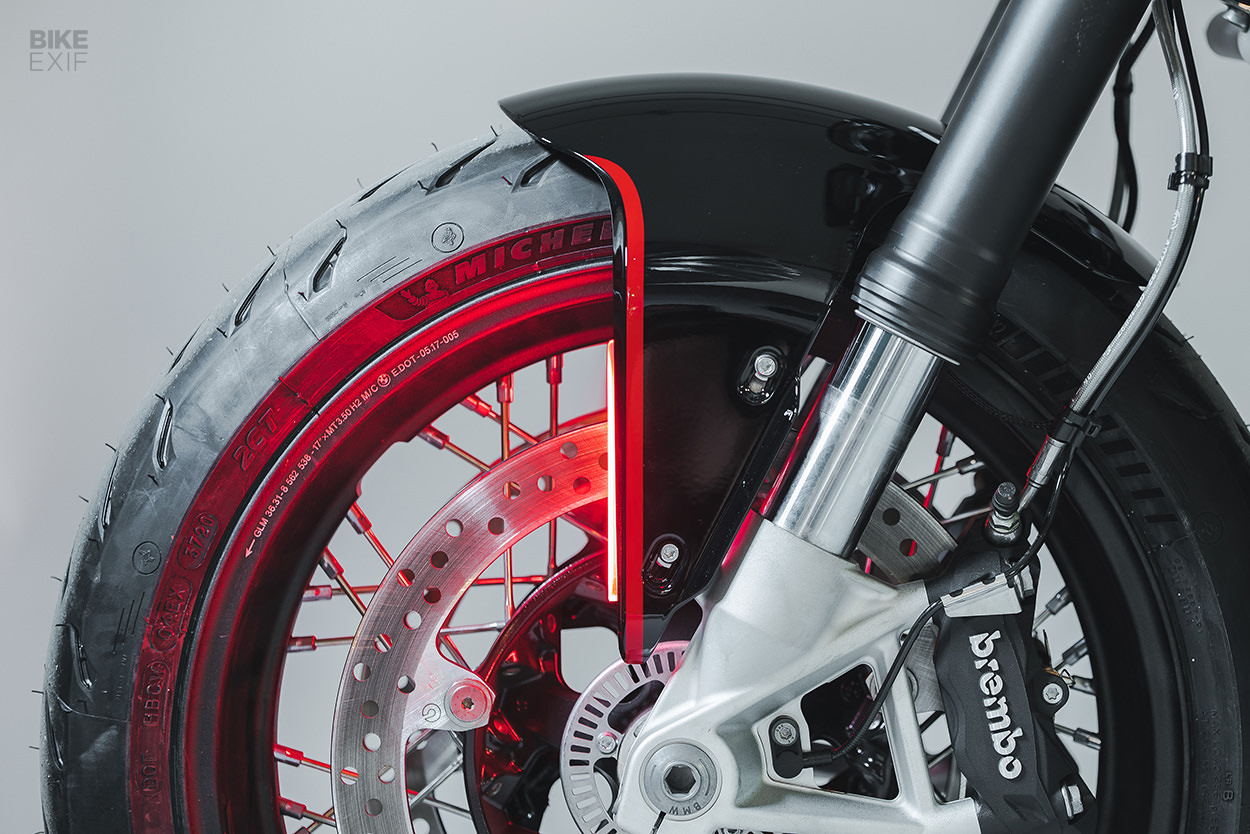
Rounding out the kit are a front fender and a cover for the single-side-mounted hub on the rear wheel. Hookie have built some slick lighting in too—with LED running lights embedded into the vertical sections of the front fender, and a wraparound acrylic strip on the tail light.
This particular prototype also wears a host of top-shelf add-ons to complement Hookie’s Cobra kit.
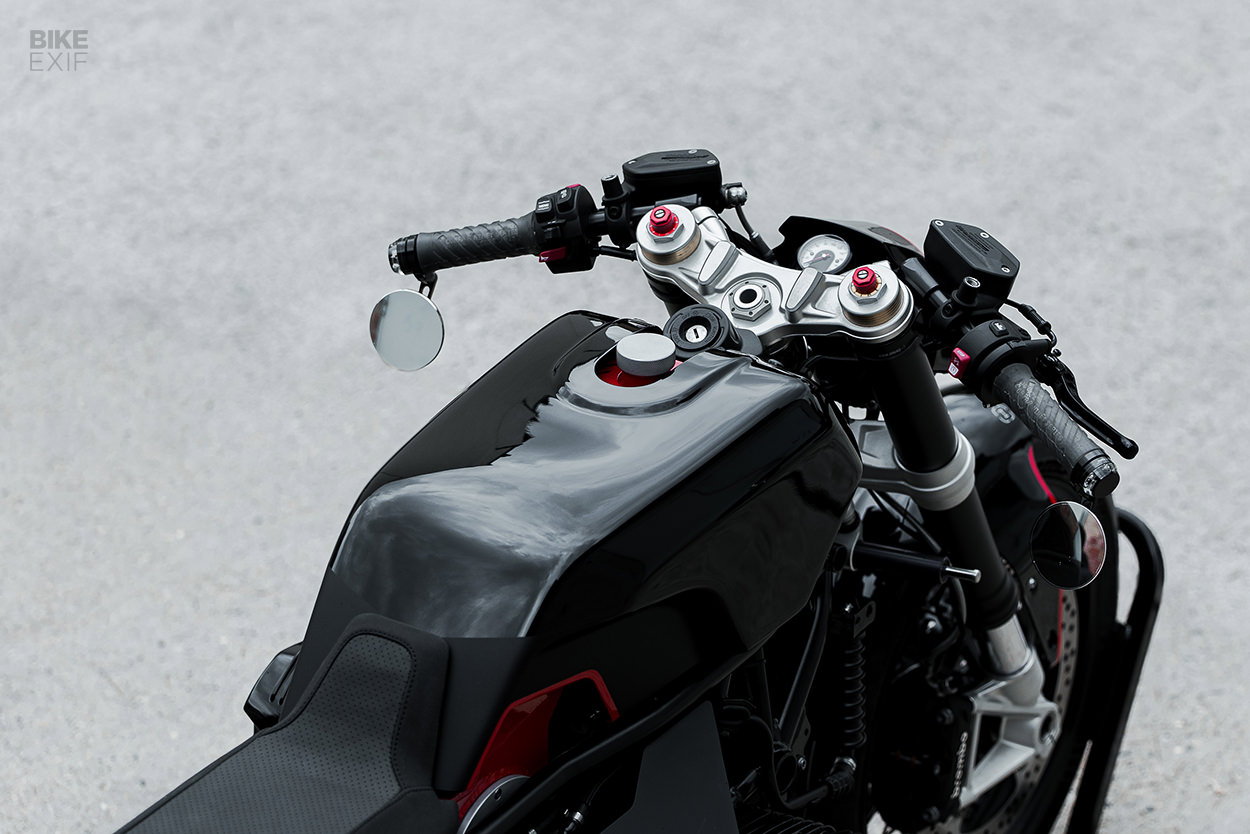
Up in the cockpit are LSL clip-ons and levers, with a Motogadget speedo, bar-end mirrors and turn signals (front and back). The R nineT is notorious for not liking aftermarket speedos, but Hookie have used a special plug-in interface from Motogadget to make this unit work.
The grips are Hookie’s own ‘Frozen’ items, and the headlight’s a Koso Thunderbolt LED unit. The crew also produces a nacelle for the Koso light, so they added that too. Lower down you’ll find a blacked-out Arrow muffler, and a pair of Michelin Power GP 50/50 street/track tires.
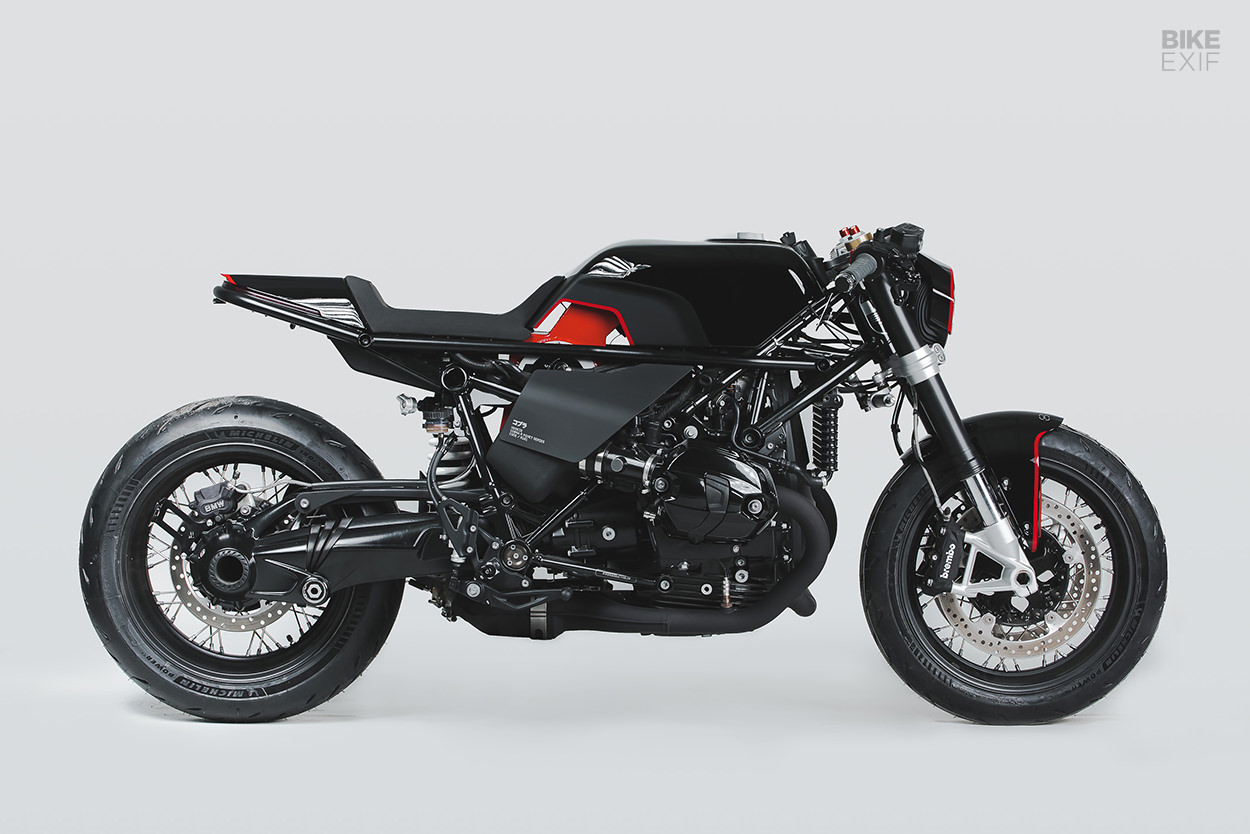
Hookie Co.’s scrambler kit is still one of our favorite R nineT conversions out there, but the Cobra might just dethrone it. Hookie are first offering it as a series of made-to-order customs, but will be releasing a limited number of DIY kits in the near future.
Slightly menacing and very cool, it’s remarkable to think what you could achieve with a stock R nineT, a box of Hookie parts and enough free time.
Hookie Co. | Facebook | Instagram | Cobra Series
